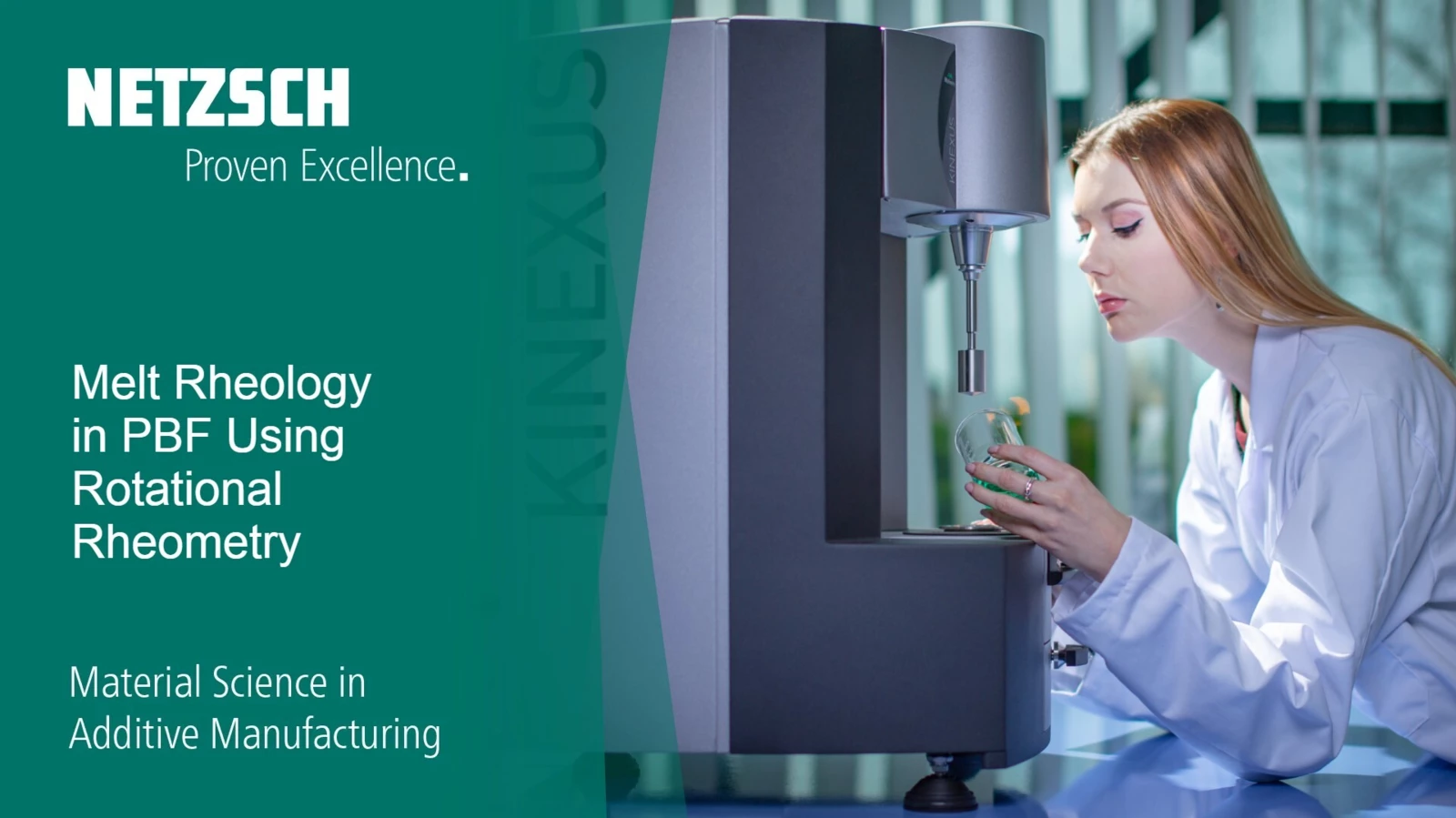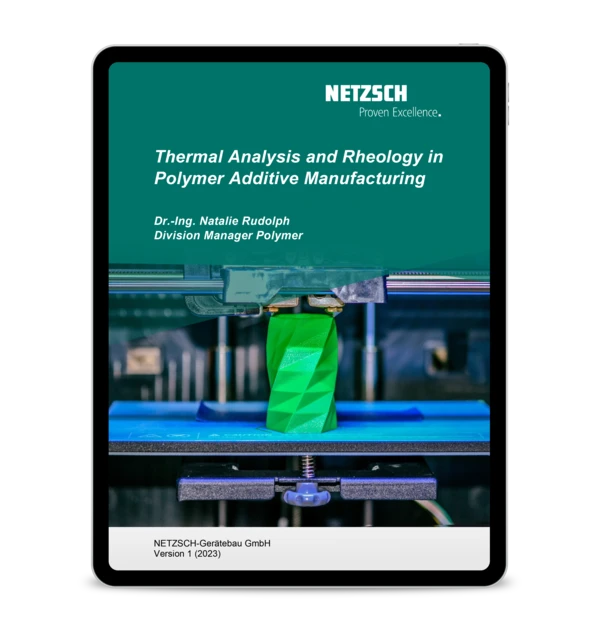
17.11.2021 von Aileen Sammler, Dr. Natalie Rudolph
Material Science in Additive Manufacturing: Melt Rheology in PBF Using Rotational Rheometry
In Powder bed fusion there is no flow and no shear rate. For powder coalescence, the local molecular motions and entanglements across the layers are important. So today, Dr. Natalie Rudolph will be focusing on the rotational rheometry.
Kriechen (Rheologie)Creep is one of the earliest “controlled stress” rheometer tests that quite literally “creeps” the material, i.e. we measure over a relatively prolonged period the small movement (the creep defined as creep compliance, J) of the sample by applying a small constant stress.Rheology is the science of deformation and flow. In this episode, we are going to talk about rheology of the melt in powder bed fusion (PBF). We will also have a look at the flow behavior of polymers using different types of rheometers depending on the process we are working with.
This week’s topic:
In conventional polymer processes such as material extrusion, we observe very high shear rates. To measure the flow behavior, we use capillary rheometers. In PBF, there is no flow and no shear rate. For powder coalescence, the local molecular motions and entanglements across the layers are important. So today, we will be focusing on rotational rheometry.
Learn about:
- The difference between rotational and capillary rheometers and which processes we should use them for
- The measurement principle of a Kinexus Rotational Rheometer
- The difference between rotation and oscillation and which effects can be studied on polymer samples
- Viscosity requirements for Polymer Powder Bed Fusion
- What “zero shear viscosity” has to say
- Determination of the crystallization behavior and modulus change with oscillatory testing

FREE E-Book
Thermal Analysis and Rheology in Polymer Additive Manufacturing
Discover the secrets behind AM's game-changing capabilities! Our newly released ebook delves deep into the heart of AM, unveiling the power of reliable material characterization techniques, specifically thermal analysis and rheology.
More Additive Manufacturing Applications by NETZSCH
Missed an episode? Learn more about Additive Manufacturing by watching our series on YouTube: #ambynetzsch – YouTube
In our next video, you will learn about analysis methods used in material extrusion.